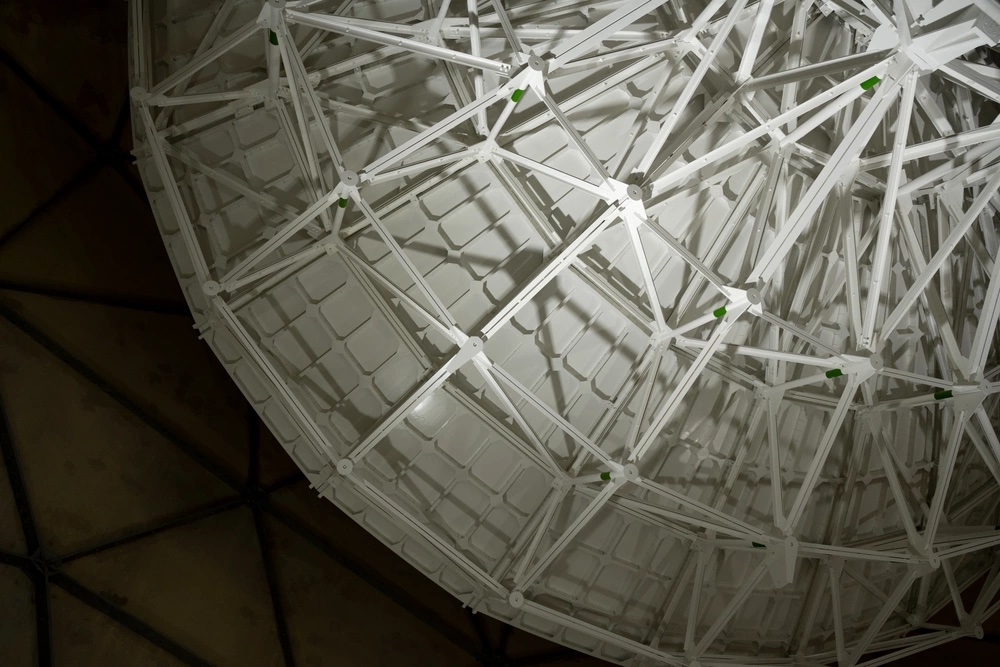The Space Force system for controlling U.S. government satellites is in urgent need of an update, and the branch also needs an up-to-date plan for delivering it, the Government Accountability Office said in a report published April 10.
The Satellite Control Network (SCN) is made up of 19 antennas stationed around the world, from Diego Garcia Island in the Indian Ocean to the village of Oakhanger in southern England to Schriever Space Force Base, Colo., where the primary control center for SCN is located.
SCN operators use the antennas to track a satellite’s location, collect its health and status reports, and send signals to control its subsystems such as power supply, antennas and mechanical and thermal control. These functions are collectively called tracking, telemetry, and commanding (TT&C), and satellite users across the federal government rely on the Space Force’s SCN operators for TT&C support.
The satellites controlled by the SCN support a wide range of important activities such as positioning, navigation, and timing; intelligence, surveillance and reconnaissance; missile warning and missile defense; communications; weather; and research and development, the GAO noted in its report. But as space becomes increasingly crowded with government satellites, the growing demand for SCN operations has fallen on an aging antenna network that is difficult to maintain and too small to meet the need.
“The SCN makes over 450 daily contacts with satellites,” GAO wrote. “Satellite users who rely on the SCN and whom GAO interviewed said that this increased demand, and resulting limits on system availability, could compromise their missions in the future.”
The problem is not new to the Department of Defense, which has known of the challenges facing SCN capacity since at least 2011, the GAO wrote. The military even developed a plan in 2017 for the long-term sustainment of SCN. However, the large reorganization of the military’s space authorities that occurred after Space Force was launched in late 2019 meant that the Life-Cycle Sustainment Plan (LCSP) is in need of an update to match the current organizational structure. The Space Force initially estimated an update the LCSP would arrive by the fall of 2022, but that update is yet to materialize.
“Without updating the LCSP for the SCN in a timely fashion, Space Force will not have sufficient information to appropriately plan and budget SCN sustainment efforts in the future,” the report states.

Part of the challenge affecting the SCN today is that its antennas can maintain contact with only one satellite at a time, and not for very long before the satellite passes over the horizon and out of contact, as Air & Space Forces Magazine has previously reported.
This has led to a scheduling system where SCN users contact the Space Force’s 22nd Space Operations Squadron to request a contact time, and the 22nd SOPS uses a prioritization matrix to schedule a time and assign operators from the 21st or 23rd Space Operations Squadrons to carry out the contact, the GAO report notes.
The problem is that as demand for SCN support grows and supply of contact times does not keep pace, scheduling conflicts occur and are exacerbated by unexpected outages, maintenance needs, or emergencies like recovering a satellite that has drifted out of its planned orbit. There were 15,780 scheduling conflicts from January 2021 through June 2022 alone, GAO noted. And as the current antenna infrastructure ages, SCN operators have to choose between maintenance needs and satisfying demand. Deferred maintenance can lead to antenna failures, one of which lasted 18 months before it could be restored to function.
Outdated infrastructure further aggravates the problem. The Space Force has had to pay a manufacturer to create a production line for making replacement parts for obsolete SCN equipment, GAO noted, and branch officials at Schriever Space Force Base, the primary control center for SCN, said the power infrastructure there is so out of date that “efforts to maintain current operations at the base are unsustainable and mitigation efforts are close to exhausted.”
How to fix it
The Space Force is aware of its growing SCN problem and has several efforts for fixing it. One effort is called the Satellite Communication Augmentation Resource (SCAR), a phased-array antenna that would allow each antenna to contact 18 to 20 different satellites at the same time rather than the one-at-a-time limit imposed by today’s parabolic SCN antennas. It would also cost less to operate the SCAR system, but the technology requires further development, a prototype is not expected until 2025, and operational units may not be available until the 2030s.
In the meantime, the Space Force is working to expand SCN capacity and make SCN scheduling more efficient. These include using five National Oceana and Atmospheric Administration antennas to help boost capacity, though it will take until the end of fiscal year 2024 for necessary upgrades to be finished. The Space Force is also exploring using commercial antennas to increase SCN capacity, though the number of commercial antennas available would depend on how many could meet government bandwidth and cybersecurity requirements.
Meanwhile, the Space Force is also looking to make its scheduling system more efficient by replacing its current “manual and labor-intensive process” with a cloud-based system, GAO wrote. The branch also plans on yanking out 80 percent of the current number of old modems, decoders, and data processors and replacing them with new, lower-footprint systems that would cut down on maintenance time by 20 to 25 percent.
However, some of these changes were not included in the 2017 Life-Cycle Sustainment Plan (LCSP), and the GAO report authors worry that could throw off the Space Force’s implementation of the plan. Branch officials say an ongoing challenge has been delineating between headquarters staff and field commands as to who is responsible for the overall SCN architecture and how those responsible can assess new systems or augment the current architecture, the report states.
Though the Space Force is working on an update for the plan, officials say it has been delayed due to reasons “including updating SCN budget information and an unclear process to finalize the LCSP,” the GAO wrote.
The need to finalize and implement the plan is urgent as the Space Force expects the number of satellites requiring SCN contacts to more than double between 2019 and 2027.
